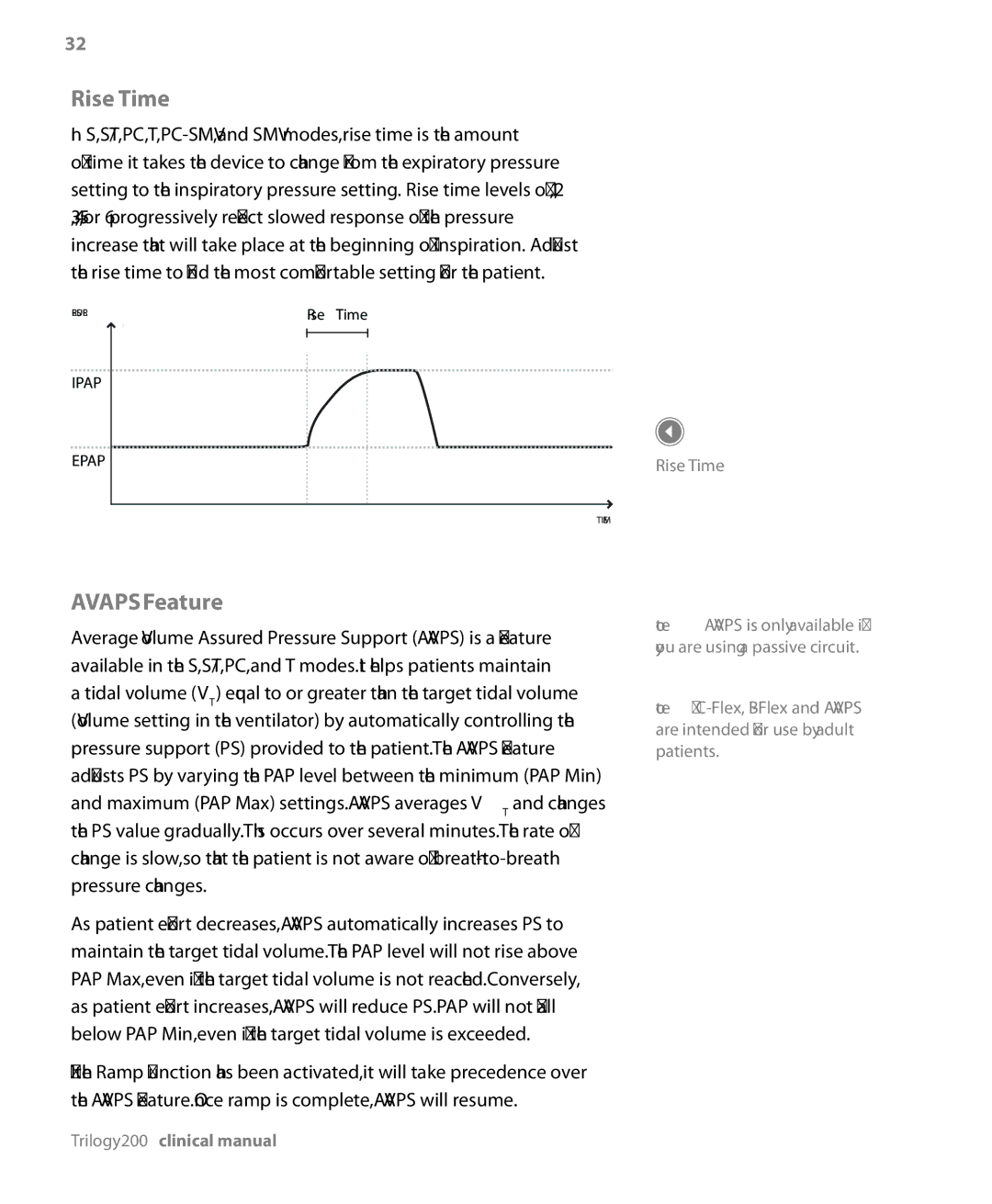
32
Rise Time
In S, S/T, PC, T,
PRESSURE | Rise Time |
IPAP |
|
EPAP | Rise Time |
| TIME |
AVAPS Feature
Average Volume Assured Pressure Support (AVAPS) is a feature available in the S, S/T, PC, and T modes. It helps patients maintain a tidal volume (VT) equal to or greater than the target tidal volume (Volume setting in the ventilator) by automatically controlling the pressure support (PS) provided to the patient. The AVAPS feature adjusts PS by varying the IPAP level between the minimum (IPAP Min) and maximum (IPAP Max) settings. AVAPS averages VT and changes the PS value gradually. This occurs over several minutes. The rate of change is slow, so that the patient is not aware of
As patient effort decreases, AVAPS automatically increases PS to maintain the target tidal volume. The IPAP level will not rise above IPAP Max, even if the target tidal volume is not reached. Conversely, as patient effort increases, AVAPS will reduce PS. IPAP will not fall below IPAP Min, even if the target tidal volume is exceeded.
If the Ramp function has been activated, it will take precedence over the AVAPS feature. Once ramp is complete, AVAPS will resume.
Note: AVAPS is only available if you are using a passive circuit.
Note:
